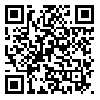Volume 28 - Supplementary
IBJ 2024, 28 - Supplementary: 152-152 |
Back to browse issues page
Download citation:
BibTeX | RIS | EndNote | Medlars | ProCite | Reference Manager | RefWorks
Send citation to:



BibTeX | RIS | EndNote | Medlars | ProCite | Reference Manager | RefWorks
Send citation to:
Marouei Milan M, Roshan Milani S, Negini M, Motazakker D, Aghazadeh R. Effects of Prenatal Methamphetamine Exposure on Anxiety-Like Behaviors of Adolescent Rat Offspring. IBJ 2024; 28 :152-152
URL: http://ibj.pasteur.ac.ir/article-1-4914-en.html
URL: http://ibj.pasteur.ac.ir/article-1-4914-en.html
Mehrshad Marouei Milan 
 , Shiva Roshan Milani *
, Shiva Roshan Milani * 
 , Mehrdad Negini
, Mehrdad Negini 
 , Denise Motazakker
, Denise Motazakker 
 , Razieh Aghazadeh
, Razieh Aghazadeh 


 , Shiva Roshan Milani *
, Shiva Roshan Milani * 
 , Mehrdad Negini
, Mehrdad Negini 
 , Denise Motazakker
, Denise Motazakker 
 , Razieh Aghazadeh
, Razieh Aghazadeh 

Abstract:
Introduction: The global increase in methamphetamine abuse during pregnancy has put a significant number of children at risk for the adverse consequences of prenatal methamphetamine exposure (PME). However, the sex- and dose-dependent effects of PME have not been extensively studied in humans and other species. The present study aimed to investigate the effects of high- and low-dose PME on anxiety-like behaviors in male and female rats across two different adolescence age intervals.
Methods and Materials: Pregnant rats were investigated into three groups: (1) control, (2) methamphetamine (0.1 mg/mL), and (3) methamphetamine (0.6 mg/mL). The control group received only drinking water. The second and third groups were administered methamphetamine in their drinking water from gestational days 15 to 19. On postnatal days 21 and 33, anxiety-like behaviors were assessed in male and female offspring exposed to PME using the elevated plus maze test. Increased entries into the open arms and increased time spent in the open arm were considered indicators of reducing anxiety in rats. Aged 21 to 35 days, the rats are comparable to 2- to 11-year-old humans, which is considered the juvenile to early adolescent period.
Results: In 21-day-old male offspring, there was a significant increase in the time spent in the open arms among both 0.1 and 0.6 PME-exposed subgroups, indicating a reduction in anxiety-like behaviors associated with PME exposure in these offspring. Moreover, in 33-day-old female offspring, there was a significant increase in open arm entry in both 0.1 and 0.6 PME exposed subgroups, indicating an anxiolytic effect of PME in these individuals. Although some differences were observed in other subgroups, these changes were not statistically significant.
Conclusion and Discussion: Exposure to PME has different anxiety-like effects on the offspring of rats, depending on their gender and age. It can be inferred that the effect of PME exposure is similar between 21-day-old male and 33-day-old female offspring, both exhibiting anxiolytic effects. However, further research is necessary to clarify how PME may positively modulate PS-induced anxiety-like behavioral changes and to understand the underlying mechanisms involved.

Methods and Materials: Pregnant rats were investigated into three groups: (1) control, (2) methamphetamine (0.1 mg/mL), and (3) methamphetamine (0.6 mg/mL). The control group received only drinking water. The second and third groups were administered methamphetamine in their drinking water from gestational days 15 to 19. On postnatal days 21 and 33, anxiety-like behaviors were assessed in male and female offspring exposed to PME using the elevated plus maze test. Increased entries into the open arms and increased time spent in the open arm were considered indicators of reducing anxiety in rats. Aged 21 to 35 days, the rats are comparable to 2- to 11-year-old humans, which is considered the juvenile to early adolescent period.
Results: In 21-day-old male offspring, there was a significant increase in the time spent in the open arms among both 0.1 and 0.6 PME-exposed subgroups, indicating a reduction in anxiety-like behaviors associated with PME exposure in these offspring. Moreover, in 33-day-old female offspring, there was a significant increase in open arm entry in both 0.1 and 0.6 PME exposed subgroups, indicating an anxiolytic effect of PME in these individuals. Although some differences were observed in other subgroups, these changes were not statistically significant.
Conclusion and Discussion: Exposure to PME has different anxiety-like effects on the offspring of rats, depending on their gender and age. It can be inferred that the effect of PME exposure is similar between 21-day-old male and 33-day-old female offspring, both exhibiting anxiolytic effects. However, further research is necessary to clarify how PME may positively modulate PS-induced anxiety-like behavioral changes and to understand the underlying mechanisms involved.

| Rights and permissions | |
 |
This work is licensed under a Creative Commons Attribution-NonCommercial 4.0 International License. |





.png)
